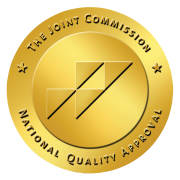How can mindfulness practices benefit mental health?
Mindfulness practices benefit mental health by reducing stress, anxiety, and depression. They promote self-awareness, emotional regulation, and focus. Mindfulness also enhances overall well-being by fostering a positive outlook on life and improving relationships with oneself and others.
Introduction
In today’s fast-paced and busy world, taking care of our mental health is more important than ever. Many individuals struggle with stress, anxiety, and depression, and are searching for effective ways to improve their wellbeing. One practice that has gained significant attention in recent years is mindfulness.
Mindfulness is a technique that involves being fully present in the moment and paying attention to one’s thoughts and feelings without judgment. It is rooted in ancient Buddhist practices but has been adapted and integrated into contemporary psychology and mental health treatments. By practicing mindfulness exercises, individuals can develop a deeper awareness of the present moment, their thoughts, emotions, and physical sensations, allowing them to better manage their mental health.
Understanding Mindfulness and Its Roots
Mindfulness has its roots in ancient Buddhist teachings, where it was used as a means to achieve spiritual enlightenment. The practice involves directing one’s attention to the present moment, taking note of one’s thoughts, feelings, and bodily sensations without judgment. It is about cultivating a sense of awareness and acceptance of the present moment, rather than getting caught up in regrets about the past or worries about the future. With the rise of technology, there are now various ways to learn and practice mindfulness, including online courses, books, audio resources, and mindfulness meditation.
Over time, mindfulness made its way to the West and has been adapted into various secular practices. Today, it is widely recognized as a valuable tool for improving mental health and overall well-being.
Defining Mindfulness in Contemporary Terms
In contemporary terms, mindfulness can be defined as the practice of intentionally bringing one’s attention to the present moment and fully experiencing it without judgment. It involves being aware of one’s thoughts, emotions, and bodily sensations as they arise, and accepting them without getting caught up in them or trying to change them.
When it comes to mental health, mindfulness can be a powerful tool in managing addiction. It helps individuals develop a greater sense of self-awareness, allowing them to recognize and manage their thoughts and emotions more effectively. By being present in the moment and accepting things as they are, individuals can reduce stress, improve their mood, and cultivate a greater sense of overall well-being. This practice has also shown to be effective in individuals with health conditions such as hypertension, chronic pain, and heart failure.
The Historical Journey of Mindfulness to the West
The journey of mindfulness from its Buddhist origins to the West is a fascinating one. It began with the integration of mindfulness into various Buddhist meditation practices, where it was used to cultivate a state of calm and focused attention. As these practices spread to the West, they underwent significant adaptation to suit the cultural context and needs of Western individuals, including its use as a component in therapies such as dialectical behaviour therapy (DBT) and acceptance and commitment therapy (ACT) recommended by the National Institute for Health and Care Excellence (NICE).
Today, mindfulness techniques are used in a variety of settings, including psychology, healthcare, and education. Mindfulness-based interventions, such as Mindfulness-Based Stress Reduction (MBSR) and Mindfulness-Based Cognitive Therapy (MBCT), have been developed and have shown promising results in improving mental health and well-being.
The Science Behind Mindfulness
The practice of mindfulness has gained significant attention from scientists and researchers in recent years. Numerous studies have explored the psychological and physiological effects of mindfulness practice on the brain and overall well-being.
Research has shown that regular mindfulness practice can lead to structural changes in the brain, particularly in areas associated with attention, emotion regulation, and self-awareness. It has also been found to reduce stress, anxiety, and symptoms of depression, as well as improve cognitive function and overall psychological well-being.
The scientific evidence supporting the benefits of mindfulness has contributed to its increasing popularity and integration into various mental health interventions.
How Mindfulness Rewires the Brain
One of the fascinating aspects of mindfulness is its ability to rewire the brain. Neuroplasticity, the brain’s ability to change and adapt, plays a crucial role in this process.
Regular mindfulness practice has been found to strengthen neural pathways associated with attention and emotion regulation, while weakening those associated with stress and reactivity. This results in improved cognitive function, emotional resilience, and overall well-being.
The practice of mindfulness also activates the prefrontal cortex, the part of the brain responsible for decision-making, self-awareness, and empathy. This activation leads to enhanced executive functioning and a greater ability to regulate one’s emotions and responses to stress.
By rewiring the brain in these ways, mindfulness practice can help individuals cultivate a greater sense of calm, focus, and emotional balance in their daily lives.
The Psychological Effects of Regular Mindfulness Practice
Regular mindfulness practice has been shown to have a wide range of psychological benefits for individuals with various mental health conditions. Studies have found that mindfulness can significantly reduce symptoms of anxiety and depression, as well as improve overall psychological well-being.
Mindfulness can help individuals develop a more positive relationship with their thoughts and emotions, allowing them to observe and accept them without judgment. This non-reactive stance can reduce rumination, worry, and negative thought patterns, leading to greater emotional resilience and improved mental health.
Additionally, mindfulness practice promotes self-compassion and self-care, which are essential components of maintaining mental well-being. By cultivating a kind and non-judgmental attitude towards oneself, individuals can develop a greater sense of self-worth and build resilience in the face of life’s challenges.
Practical Mindfulness Techniques
Practicing mindfulness doesn’t have to be complicated or time-consuming. There are simple techniques that individuals can incorporate into their daily lives to cultivate mindfulness and reap its benefits.
One such technique is paying attention to the body’s sensations. This involves tuning into the physical sensations in the body, such as the feeling of the breath or the sensations of the feet on the ground. By directing one’s attention to these sensations, individuals can anchor themselves in the present moment and cultivate a sense of groundedness.
Another practical mindfulness technique is mindful breathing. This involves focusing one’s attention on the breath, noticing the sensation of the breath entering and leaving the body. By bringing awareness to the breath, individuals can calm their minds and relax their bodies, fostering a state of mindfulness.
Mindful Breathing Exercises for Daily Practice
- One-minute mindful breathing: Take a minute to focus on your breath, noticing the inhalation and exhalation, and bringing your attention back whenever your mind wanders.
- Box breathing: Inhale for a count of four, hold for a count of four, exhale for a count of four, and hold for a count of four. Repeat this cycle several times, focusing on the breath and the present moment.
- Mindful breathing during daily activities: Bring your attention to your breath while engaging in everyday tasks, such as washing dishes or taking a shower. Notice the sensation of the breath as you go about your day.
By incorporating these mindful breathing exercises into daily life, individuals can cultivate a greater sense of calm, reduce stress, and improve their overall well-being.
Incorporating Mindful Moments into Everyday Life
Mindfulness is not limited to formal meditation practice; it can be integrated into everyday life. By bringing full attention to the present moment, individuals can experience greater richness and satisfaction in their daily experiences.
One way to incorporate mindfulness into everyday life is to dedicate specific moments to being fully present. For example, while enjoying a cup of tea, focus on the taste, aroma, and sensation of each sip. By savoring the moment and letting go of distractions, individuals can fully engage with the experience and cultivate a sense of gratitude.
Similarly, while engaging in conversations or performing daily tasks, strive to be fully present and attentive. By giving our full attention to the present moment, we can enhance our relationships, improve our productivity, and find greater joy in our everyday lives.
Body Scan Meditation: A Tool for Awareness
The body scan meditation is a powerful mindfulness technique that helps individuals cultivate awareness of their physical sensations and bring attention to the present moment. It involves systematically scanning the body, starting from the toes and moving up to the head, and noticing any bodily sensations that arise.
By practicing the body scan meditation, individuals can develop a greater sense of bodily awareness and connection. It allows them to tune into the subtle signals that the body provides, such as tension, discomfort, or relaxation. This increased awareness can help individuals identify and address physical and emotional needs, leading to improved self-care and overall well-being.
Mindfulness for Mental Health
Mindfulness has been shown to be beneficial for individuals struggling with various mental health conditions. From anxiety and depression to chronic pain and stress, mindfulness can offer support and relief.
For individuals experiencing symptoms of anxiety, mindfulness techniques can help reduce worry, rumination, and the physical manifestations of anxiety. By cultivating present-moment awareness and accepting anxiety-related thoughts and sensations, individuals can develop greater resilience and cope with anxiety more effectively.
Similarly, individuals with chronic pain can benefit from mindfulness practice. By bringing non-judgmental awareness to sensations of pain, individuals can change their relationship with pain and develop more effective coping strategies. Mindfulness can also provide a sense of control and empowerment for individuals struggling with chronic pain.
Addressing Anxiety and Depression Through Mindfulness
Mindfulness techniques have shown promise in helping individuals manage symptoms of anxiety and depression. By practicing mindfulness, individuals can cultivate a greater sense of present-moment awareness, which can help reduce rumination, worry, and negative thought patterns associated with these mental health conditions.
For individuals with symptoms of anxiety, mindfulness techniques such as breath awareness and body scan meditation can help calm the nervous system and promote relaxation. By focusing on the present moment and accepting anxiety-related thoughts and sensations without judgment, individuals can reduce anxiety and improve their overall well-being.
Similarly, individuals with recurrent depression can benefit from mindfulness practice. Mindfulness-Based Cognitive Therapy (MBCT) has been specifically developed to help individuals with recurring depression. It combines mindfulness techniques with cognitive-behavioral therapy to break the cycle of negative thought patterns and prevent relapse.
The Role of Mindfulness in Stress Reduction
Stress is a common experience in today’s fast-paced world, and it can have detrimental effects on our mental and physical health. Mindfulness practice offers a powerful tool for managing and reducing stress.
By cultivating present-moment awareness and non-judgmental acceptance, individuals can better cope with stressors and reduce the impact of stress on their well-being. Mindfulness helps individuals become more aware of their thoughts and emotions, allowing them to recognize and challenge negative thought patterns that contribute to stress.
Through regular mindfulness practice, individuals can develop a greater sense of calm, relaxation, and resilience in the face of stress. By bringing attention to the present moment, individuals can release stress-related worries about the future or regrets about the past and focus on what they can control in the present.
Integrating Mindfulness into Your Lifestyle
To truly experience the benefits of mindfulness, it is important to integrate it into everyday life. This involves incorporating mindfulness into various aspects of our routines and activities.
One way to integrate mindfulness into everyday life is through mindful eating. By bringing full attention to the act of eating, individuals can savor the flavors, textures, and smells of their food. Mindful eating promotes a greater connection with our bodies’ hunger and fullness cues, leading to a more balanced and enjoyable relationship with food.
Mindfulness training can also be integrated into everyday life by creating a mindful morning routine. By starting the day with mindfulness practices such as breath awareness or meditation, individuals can set a positive tone for the day and cultivate a sense of calm and focus.
Creating a Mindful Morning Routine
A mindful morning routine can help individuals start the day with intention and presence. By incorporating mindfulness practices into the morning routine, individuals can set the tone for a calmer and more centered day.
One way to create a mindful morning routine is to begin the day with a few minutes of mindful breathing or meditation. This helps individuals ground themselves in the present moment and cultivate a sense of calm and focus.
Another aspect of a mindful morning routine is engaging in mindful eating. Rather than rushing through breakfast, individuals can bring full attention to the flavors, textures, and sensations of their food. By savoring each bite and eating with full attention, individuals can start the day with a greater sense of nourishment and satisfaction.
Mindful Eating: Connecting with Your Food
Mindful eating is a practice that involves bringing full attention and awareness to the act of eating. By slowing down and paying attention to the sensory experience of eating, individuals can develop a greater connection with their food and their bodies.
To engage in mindful eating, individuals can start by creating a calm and inviting eating environment. This involves sitting down at a table, minimizing distractions, and eating in a relaxed setting.
While eating, individuals can bring full attention to the flavors, textures, and smells of their food. They can savor each bite, noticing the sensations and chewing slowly and mindfully.
By practicing mindful eating, individuals can develop a healthier relationship with food, tune into their body’s hunger and fullness cues, and cultivate a greater sense of satisfaction and enjoyment from meals.
The Benefits of Mindful Walking
Mindful walking is a practice that involves bringing full attention and awareness to the act of walking. It can be done anywhere, whether it’s a walk in nature or a walk to work.
During mindful walking, individuals focus on the physical sensations of each step, the feeling of the ground beneath their feet, and the movement of their body. By tuning into these sensations, individuals can cultivate a sense of groundedness and presence in the present moment.
In addition to the mental and emotional benefits of mindful walking, it also has physical health benefits. Walking mindfully can help improve cardiovascular health, increase endurance and fitness levels, and reduce the risk of chronic conditions such as heart disease and obesity.
Overcoming Challenges in Mindfulness Practice
While mindfulness practice has numerous benefits, it is not without its challenges. Individuals may encounter obstacles that make it difficult to maintain a consistent practice. However, with awareness and commitment, these challenges can be overcome.
One common challenge is dealing with difficult thoughts and emotions that arise during mindfulness practice. Rather than trying to push them away or suppress them, individuals are encouraged to approach these thoughts and emotions with curiosity and compassion. Accepting and acknowledging them without judgment is an important part of the mindfulness practice.
Another challenge is staying committed to mindfulness practice, especially during busy times. It is important to prioritize self-care and set aside dedicated time for mindfulness practice, even if it is just a few minutes each day. Making mindfulness a part of one’s daily routine can help overcome this challenge.
Common Obstacles and How to Navigate Them
In the journey of mindfulness practice, individuals may encounter common obstacles that hinder their progress. However, with awareness and intention, these obstacles can be navigated.
One common obstacle is the tendency to operate on autopilot, going through daily routines without fully engaging in the present moment. To overcome this, individuals can cultivate a sense of curiosity and bring attention to the details of their everyday experiences. By noticing the sights, sounds, and sensations of the present moment, individuals can break free from autopilot and cultivate mindfulness next time they find themselves lost in worry.
Another obstacle is the resistance to difficult thoughts and emotions that arise during mindfulness practice. Rather than avoiding or suppressing these thoughts and emotions, individuals are encouraged to approach them with curiosity and compassion. Acknowledging and accepting these experiences without judgment is an important part of the mindfulness journey.
Staying Committed to Mindfulness in Busy Times
In today’s busy world, finding time for mindfulness practice can be challenging. However, staying committed to mindfulness during busy times is crucial for mental well-being.
One way to overcome this challenge is to set aside dedicated time for mindfulness practice. This can be as little as a few minutes each day. By prioritizing this time and treating it as non-negotiable, individuals can create a routine and ensure that mindfulness becomes a regular part of their lives. They can also utilize helpful tools such as in-person classes, apps, and online classes to stay committed to their mindfulness practice, no matter how busy their schedule may be. Learning how to claim some “me time” and setting aside time for yourself is crucial in mastering mindfulness for mental health.
Additionally, individuals can find opportunities for mindfulness throughout the day, even during busy times. Taking a few moments to focus on the breath, engage in mindful walking, or bring attention to the present moment can help individuals stay grounded and centered amidst the busyness.
How Long Does It Take to See Benefits from Mindfulness?
The timeline for experiencing the benefits of mindfulness can vary from person to person. While some individuals may notice improvements in their mental well-being after a few weeks of regular practice, others may take longer. The evidence base for mindfulness suggests that consistent practice over an extended period is more likely to yield positive effects on mental health and overall well-being.
In mastering mindfulness, you embark on a transformative journey towards mental well-being. By understanding its roots, practicing mindfulness techniques, and integrating it into your daily life, you can address anxiety, depression, and stress effectively. Mindfulness rewires the brain, fostering a positive mindset and resilience.
Despite challenges, staying committed to mindfulness yields lasting benefits. Embrace mindfulness to create a mindful morning routine, practice mindful eating, and enjoy mindful walking.
Do you want to know more about mindfulness and mental health? Start your journey today to nurture a healthier mind and a balanced life by calling Lido Wellness Center.



